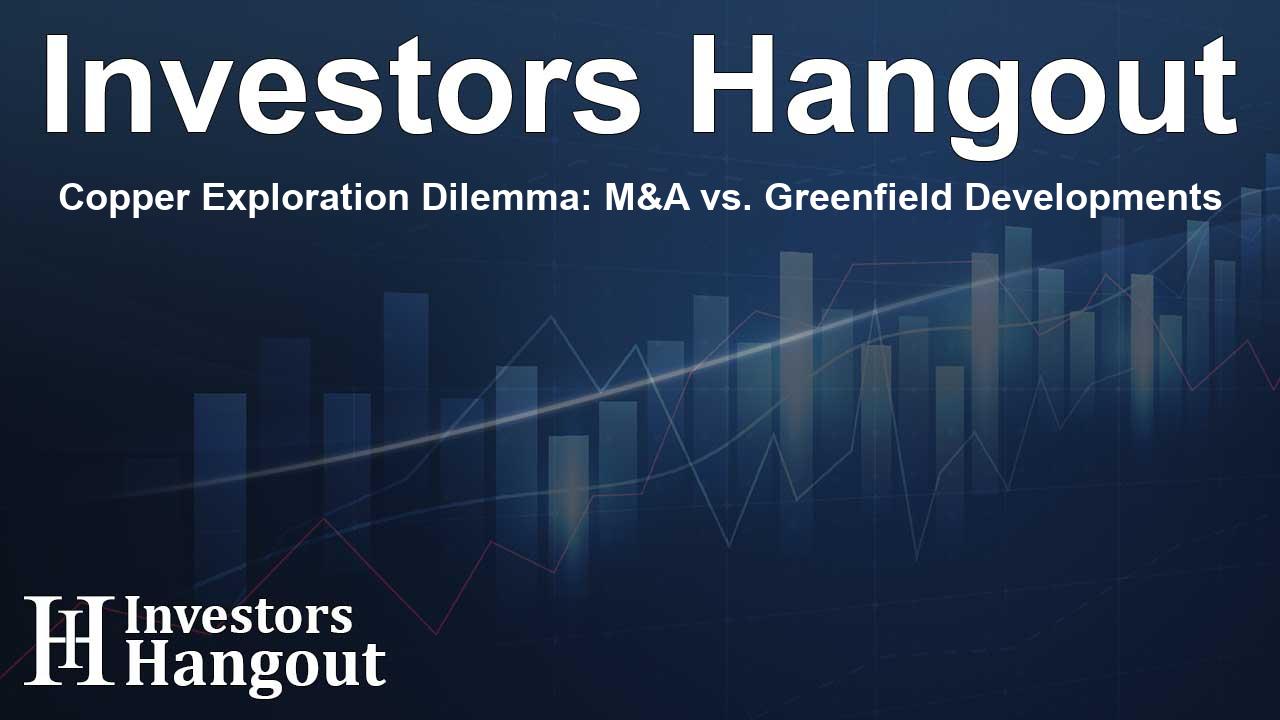Copper Exploration Dilemma: M&A vs. Greenfield Developments

Understanding the Current Trends in Copper Exploration
The world of mining is witnessing a significant trend where mergers and acquisitions (M&A) are becoming more prominent, overshadowing the critical aspect of greenfield exploration. This shift indicates that companies are leaning more towards acquiring existing resources rather than investing the time and money into discovering new deposits, which is both costly and fraught with risks.
The State of Copper Prices and Future Projections
Recently, copper reached its highest price point in May but has since experienced a downturn, stepping back from the spotlight as gold takes center stage. Yet, despite this price decline, analysts continue to warn about potential shortages of copper. They anticipate significant disparities between supply and demand in the upcoming years.
BHP and Its Diversified Approach
The BHP Group Ltd. focuses on acquiring rather than merely developing new mines. Their Oak Dam project in Australia is a noteworthy exception, representing one of the few large-scale greenfield copper projects under active development today. Estimates for this find suggest it could hold between 500 million to 1.7 billion tons of ore at an attractive copper grade of 0.8% to 1.1%.
Mining Industry Trends Favoring Acquisitions
Despite the promise that Oak Dam holds, BHP has shifted more of its efforts towards acquisitions, such as its purchase of OZ Minerals for $6.4 billion. Moreover, they recently acquired the Filo copper project, partnering with Lundin Mining to explore opportunities on the Argentina-Chile border.
Challenges Face New Mining Developments
The financial landscape for establishing new mining operations reflects a discernible slowdown. Initial capital expenditures, often referred to as capex, have skyrocketed alongside rising operational costs. For example, the Dundee Precious Metals project in Serbia entails an estimated capex of $381 million to yield a mere 129,000 ounces of gold per year.
Historical Context of Mining Discoveries
The burgeoning costs and complexities of mining are evident when examining current projects, many of which stem from discoveries made in the 20th century. Notably, the Escondida mine, recognized as the world's largest copper mine, was discovered in the late 1970s. This reveals a concerning trend, as BHP's geologist, Michael Fonti, emphasizes that most of today's productive mines are based on discoveries from decades past.
Leveraging AI in Mining Exploration
Amidst these complexities, technological advancements, particularly in the realm of artificial intelligence (AI), present a beacon of hope for the mining sector. AI can sift through a wealth of historical geological data to pinpoint potential mining opportunities that may have previously been overlooked. This approach has already been beneficial for projects like Oak Dam, which was nearly missed until advanced geophysical techniques brought it to light.
The Rise of AI-Driven Companies
Innovative startups such as KoBold Metals are fully utilizing AI from their inception, applying sophisticated data analysis to discover new mining deposits. Backed by prominent figures like Bill Gates, Jeff Bezos, and Jack Ma, KoBold Metals is on the brink of going public, anticipating a valuation around $2 billion.
External Influences Affecting Mining Ventures
Further complicating the landscape for new mining projects are various external factors, including geopolitical instability. Recent events in Pakistan highlight how political unrest can threaten operations, particularly in regions harboring significant mineral resources such as the Barrick's Reko Diq project.
Additionally, developments in Panama where the government has shut down the Cobre Panama mine—critical for supplying around 1.5% of the global copper demand— underline the profound impact that regulatory changes can have on the viability of mining projects.
Frequently Asked Questions
What are the main factors driving the M&A trend in mining?
Rising costs, lengthy permitting processes, and geopolitical risks often make acquisitions more desirable than greenfield exploration.
How do copper prices affect mining investments?
Fluctuating copper prices can influence investment decisions, with lower prices potentially discouraging new mining projects.
How is AI changing the mining industry?
AI enhances the ability to analyze geological data, allowing for the discovery of new deposits and improving predictive capabilities.
What challenges do new mining projects face today?
Challenges include increased capital expenditures, regulatory hurdles, and geopolitical instability that threatens project viability.
What is significant about the Oak Dam project?
Oak Dam is a large-scale greenfield copper project with considerable exploration potential, and it exemplifies the challenges faced in the current mining landscape.
About The Author
Contact Addison Perry privately here. Or send an email with ATTN: Addison Perry as the subject to contact@investorshangout.com.
About Investors Hangout
Investors Hangout is a leading online stock forum for financial discussion and learning, offering a wide range of free tools and resources. It draws in traders of all levels, who exchange market knowledge, investigate trading tactics, and keep an eye on industry developments in real time. Featuring financial articles, stock message boards, quotes, charts, company profiles, and live news updates. Through cooperative learning and a wealth of informational resources, it helps users from novices creating their first portfolios to experts honing their techniques. Join Investors Hangout today: https://investorshangout.com/
The content of this article is based on factual, publicly available information and does not represent legal, financial, or investment advice. Investors Hangout does not offer financial advice, and the author is not a licensed financial advisor. Consult a qualified advisor before making any financial or investment decisions based on this article. This article should not be considered advice to purchase, sell, or hold any securities or other investments. If any of the material provided here is inaccurate, please contact us for corrections.
